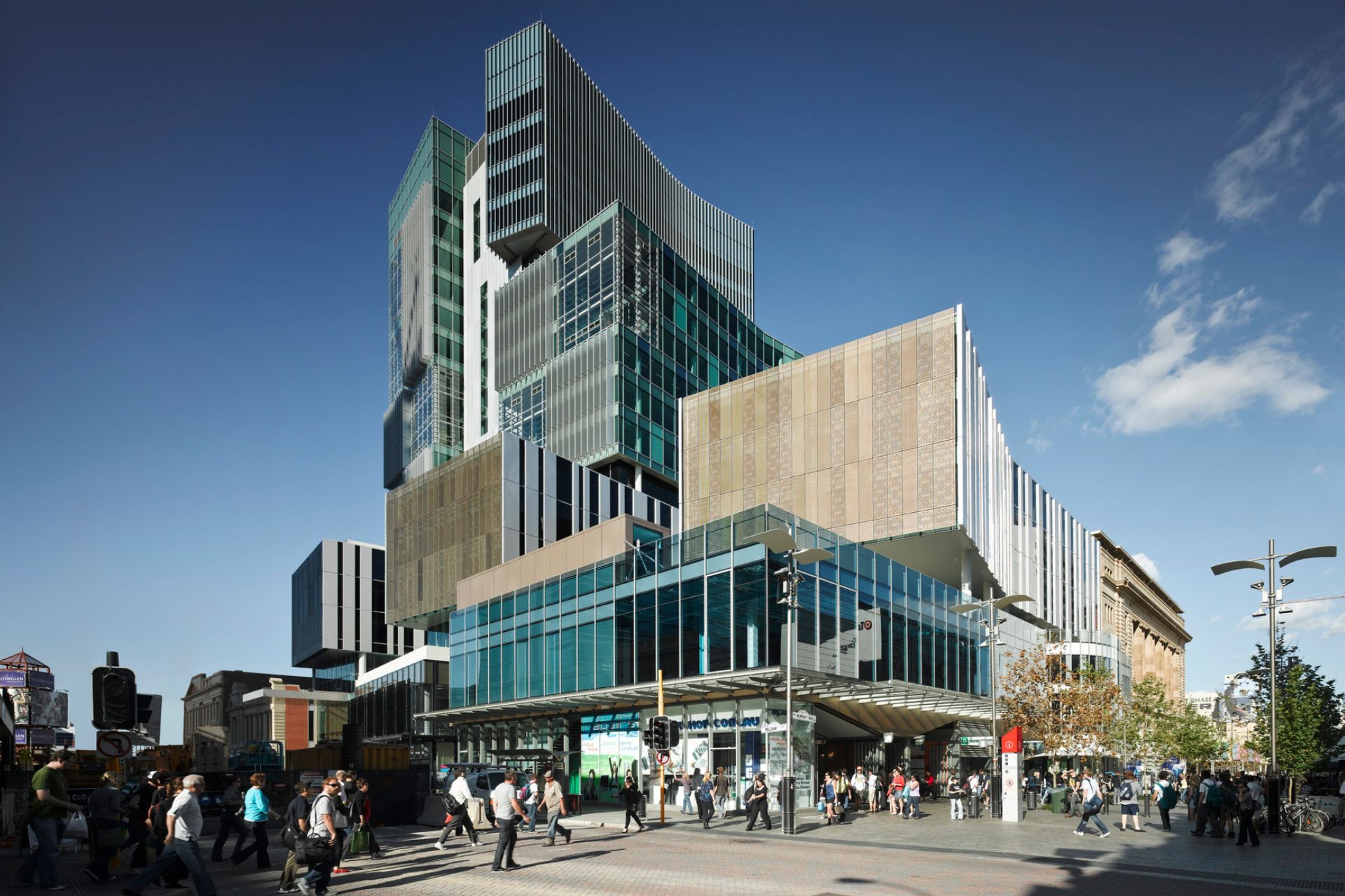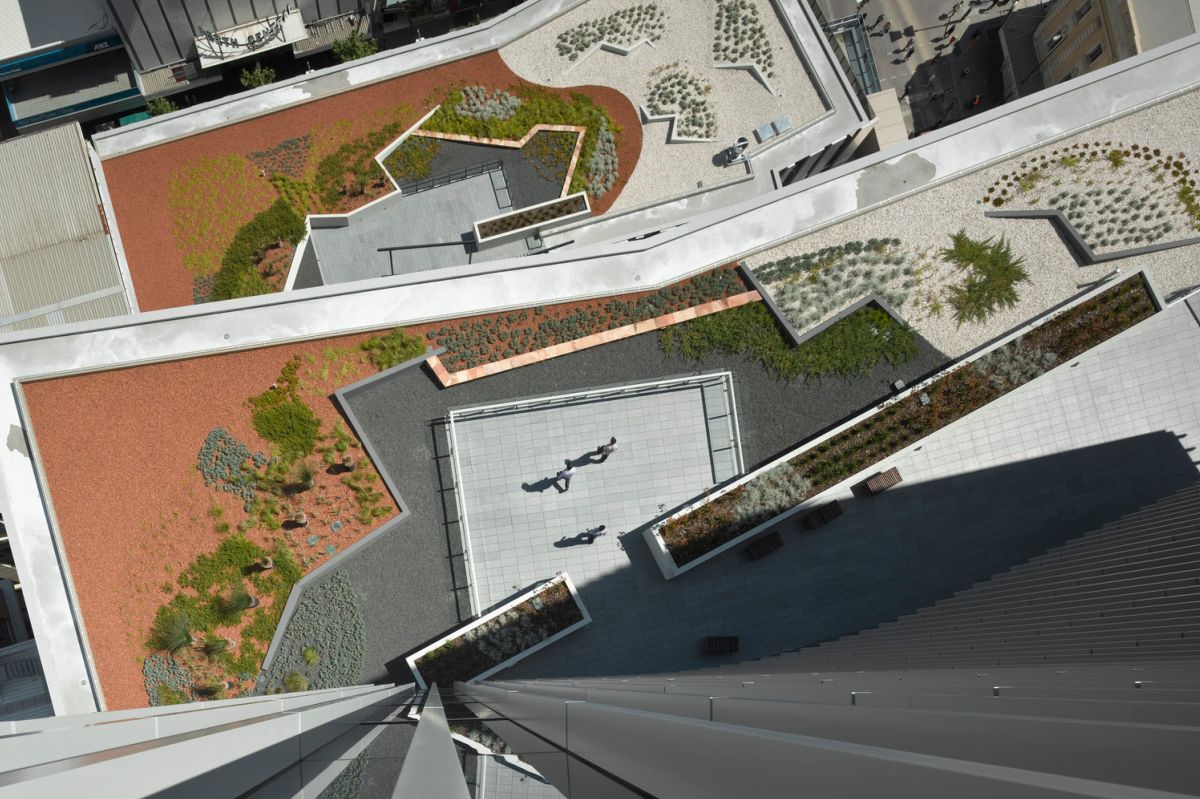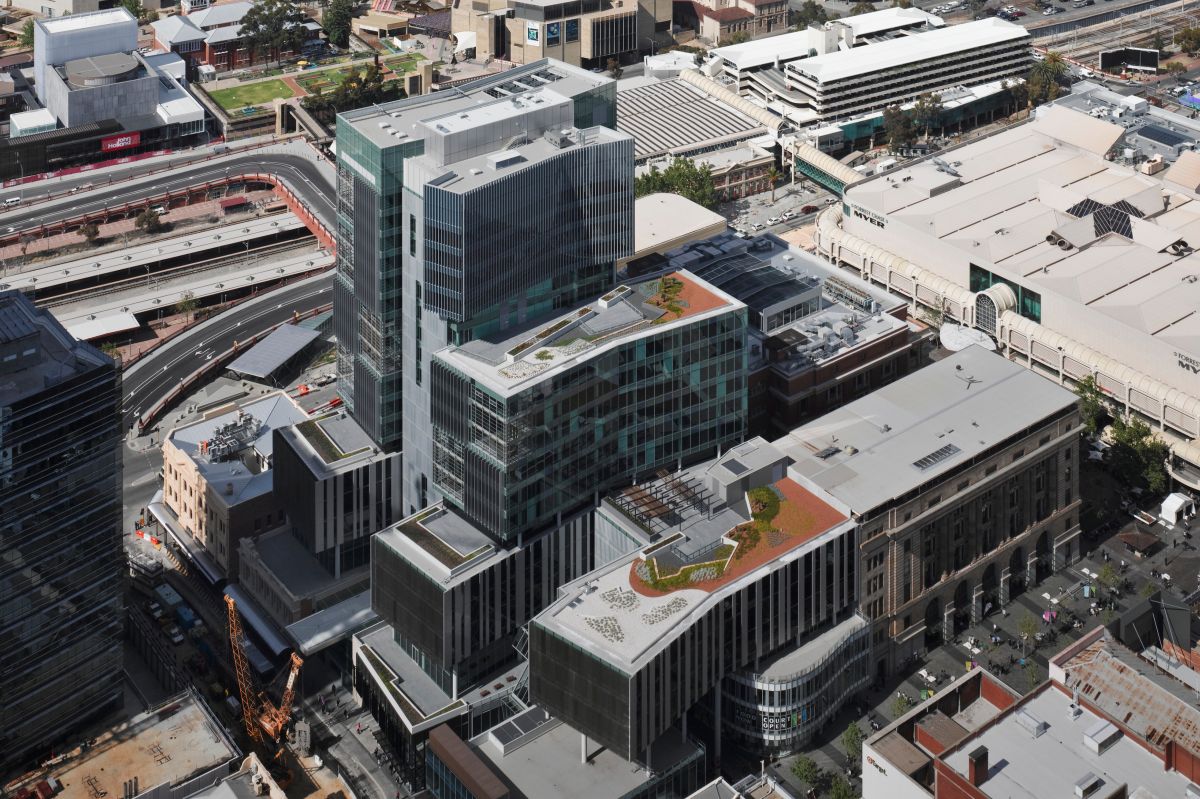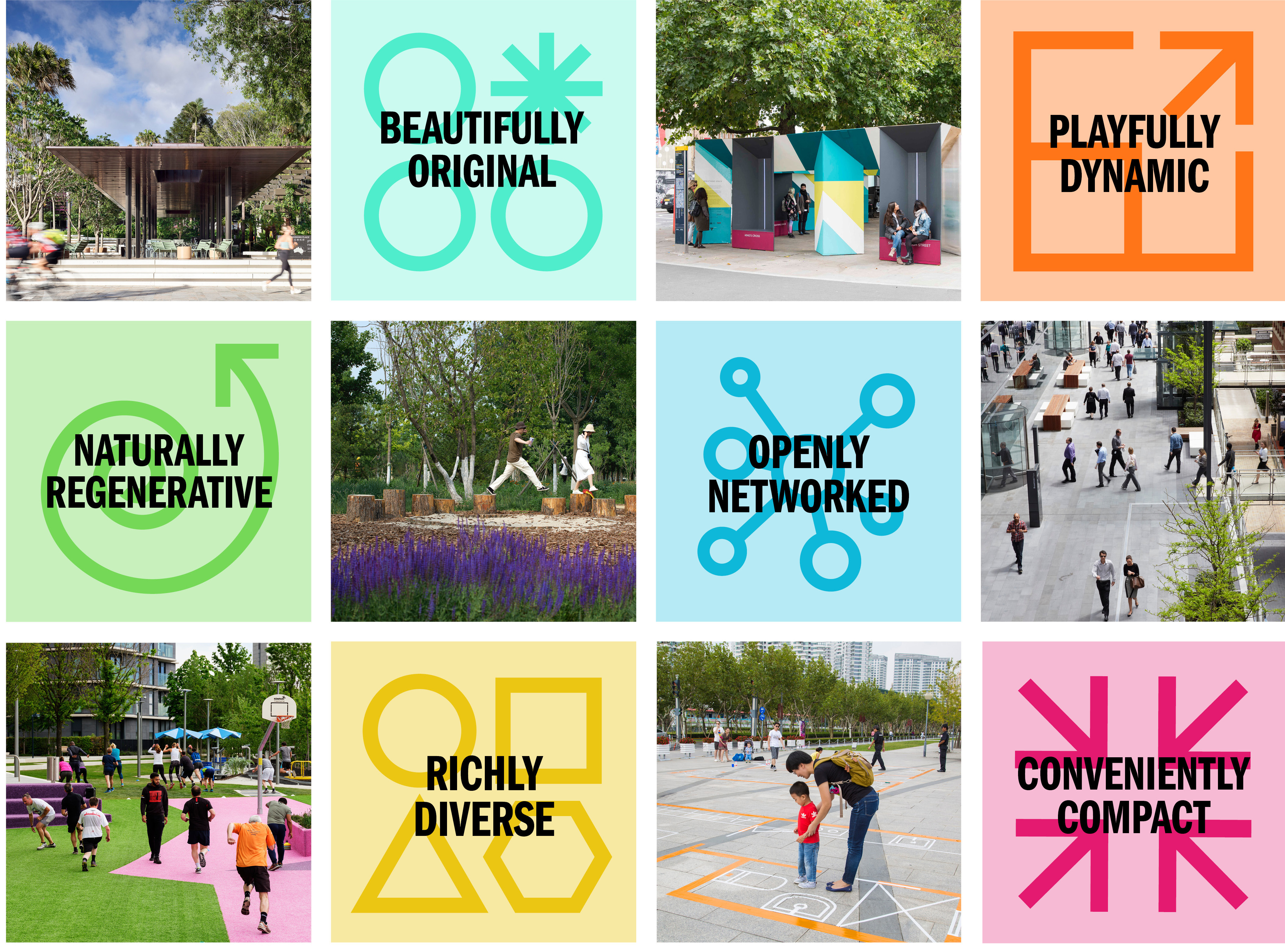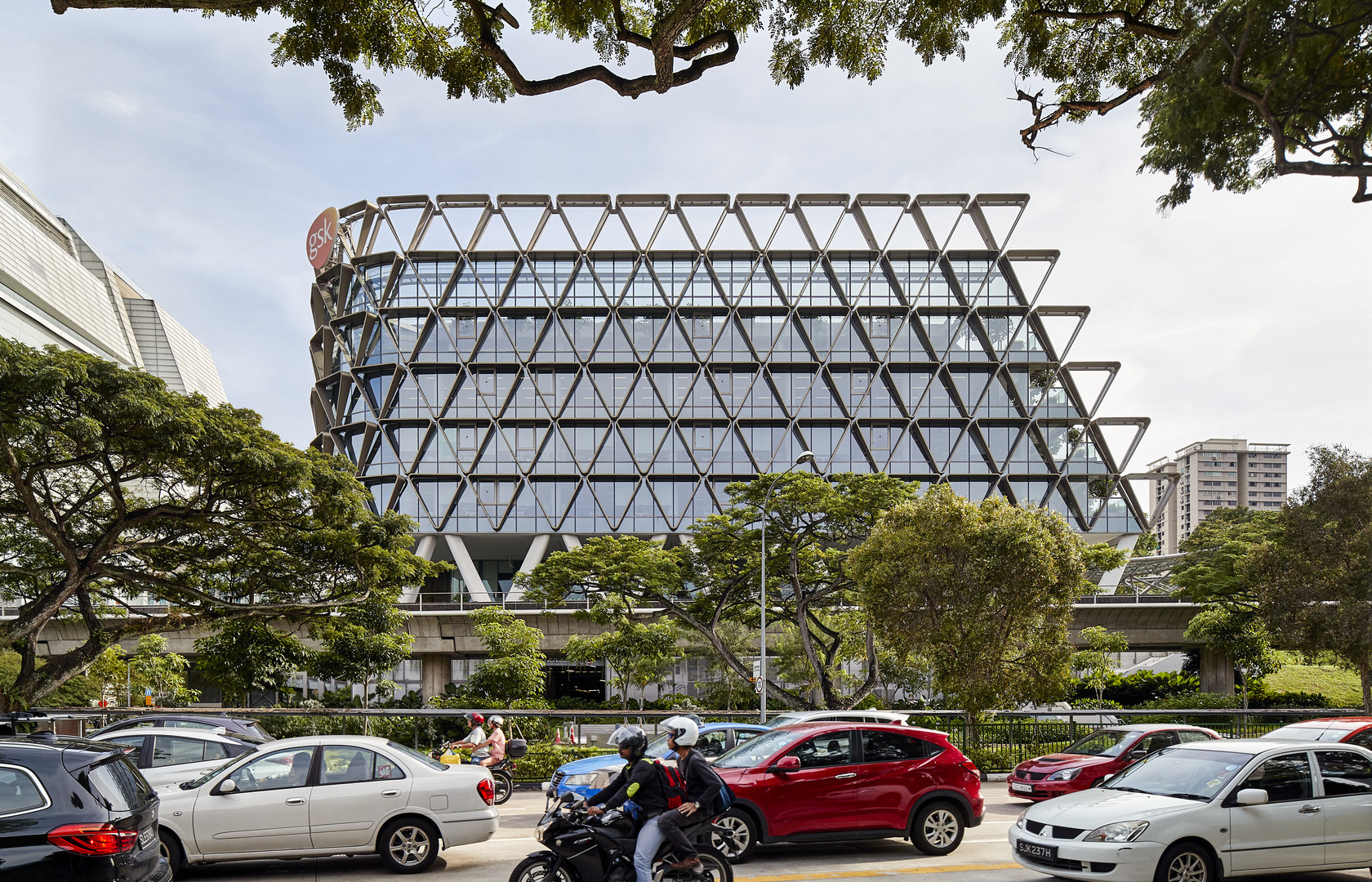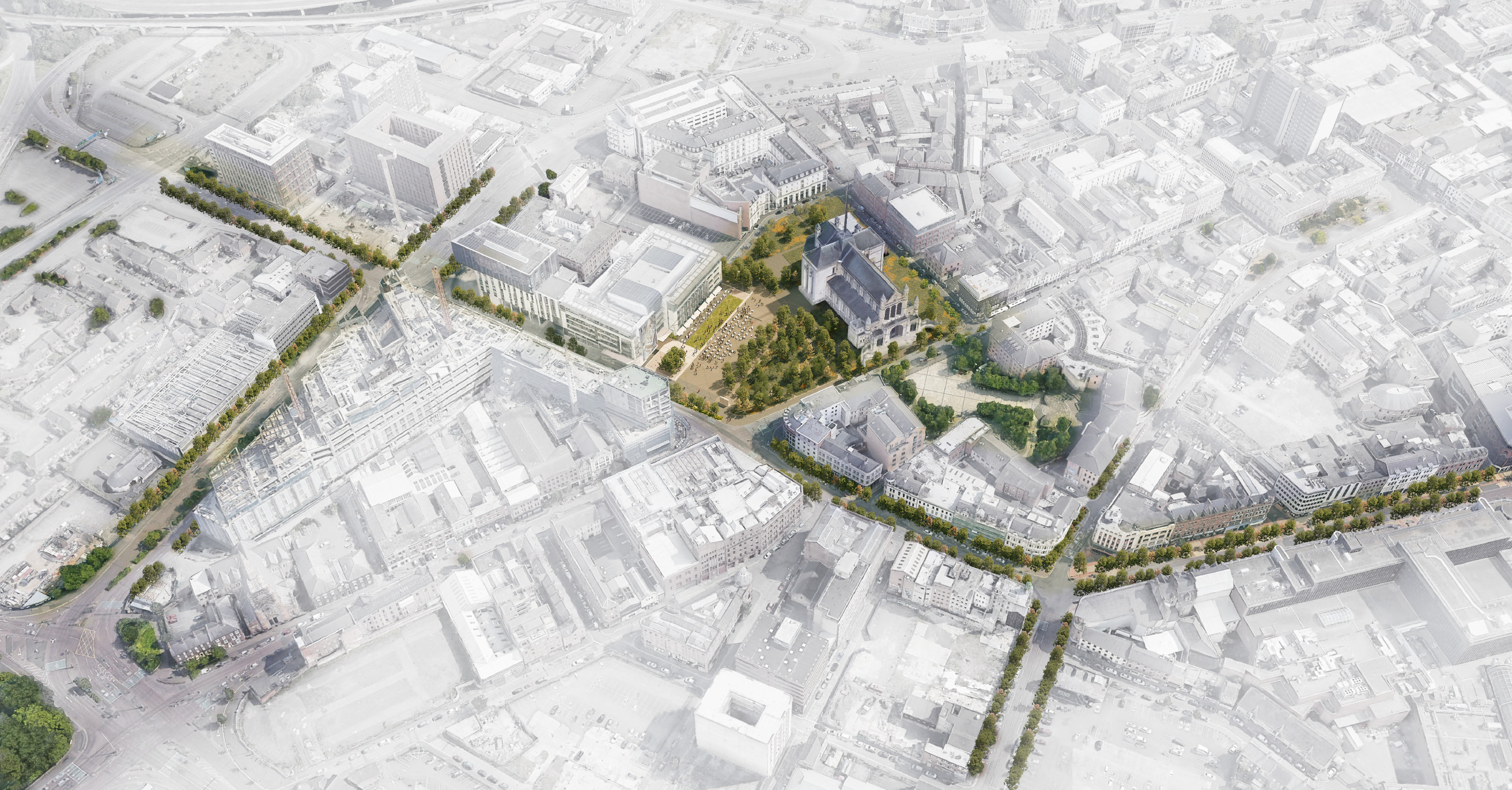Awards
At the 2011 awards, the Australian Institute of Architects’ judges described one40william as one of Perth’s most significant and influential new buildings. The project won four major awards.
- 2011 AIA (National) Walter Burley Griffin Award for Urban Design
- 2011 AIA (WA) George Temple Poole Award for overall winning architectural project
- 2011 AIA (WA) Ross Chisholm Award for Commercial Architecture
- 2011 AIA (WA) John Septimus Roe Award for Urban Design
Presenting the George Temple Poole award, the judges noted the links between one40william and neighbouring buildings, including the GPO Building on Forrest Place and the heritage buildings on Wellington St. Hassell was commended for changing Perth’s skyline and helping to establish a deeper north-south alignment in the CBD. The integration of winter gardens and roof terraces was highlighted and an overall design that minimises energy and water consumption while maximising natural light.
“The real success of the project from an urban design perspective is at the ground plane where the building blurs the boundaries between public and private, social and workplace, circulation and interaction.”
— AIA judges
Sustainability
One40William has achieved these sustainability ratings.
- 5-Star Green Star Office Design
- 5-Star Green Star office As-Built
- 5.5-Star NABERS Energy rating for the office tower
- 4.5-Star NABERS Design rating (exceeded)
In the past five years, Cbus Property reported a 12.27 percent decrease in electricity consumption and a 27 percent decrease in water consumption. The project’s sustainable features include:
- high efficiency low temperature VAV air conditioning
- heat recovery (a heat exchanger in the mechanical system that extracts heat from the AC return air and uses it to power the cooling system)
- ‘peak load’ generator topping, which enables the building operations to run independently from the main electricity grid reducing the demand on the network preventing brownouts
- waterless urinals
- transport options that promote a reduction in car use and increase in physical exercise (public, bicycle, end-of-trip, reduced car parking).
